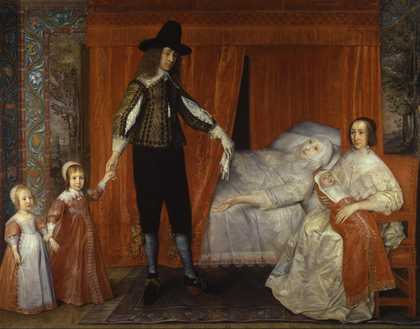
David Des Granges
The Saltonstall Family (c.1636–7)
Tate
I first saw The Saltonstall Family about twenty years ago hanging in one of the stairwells at Tate. Seeing it again recently, I was surprised how compelling it still is - though I’m not sure I’ll make any more drawings about it.
They say the woman in the bed is the dead first wife. Whoever she is, she dominates the picture and comes across as a powerful character. If she is dead, it’s a formidable statement for the next wife. The man is tall. In fact, he nearly reaches the ceiling with his high heels and high hat. He appears so young and aloof and maybe insecure standing above everyone else. His jacket seems too small for him. The seated woman looks very tired - I would be too if I were competing with a dead woman within a marriage. Is she his second wife?
Why are the children the same colour as the furniture; are they furniture? Why is the man in black? Why are the women in white? I am repeatedly struck by the picture’s oddity. It is melancholic, hierarchical and awkward. It’s about the past and the future, and about the space between people and how they communicate. A formal painting - repressive even - yet it vibrates with emotion.
